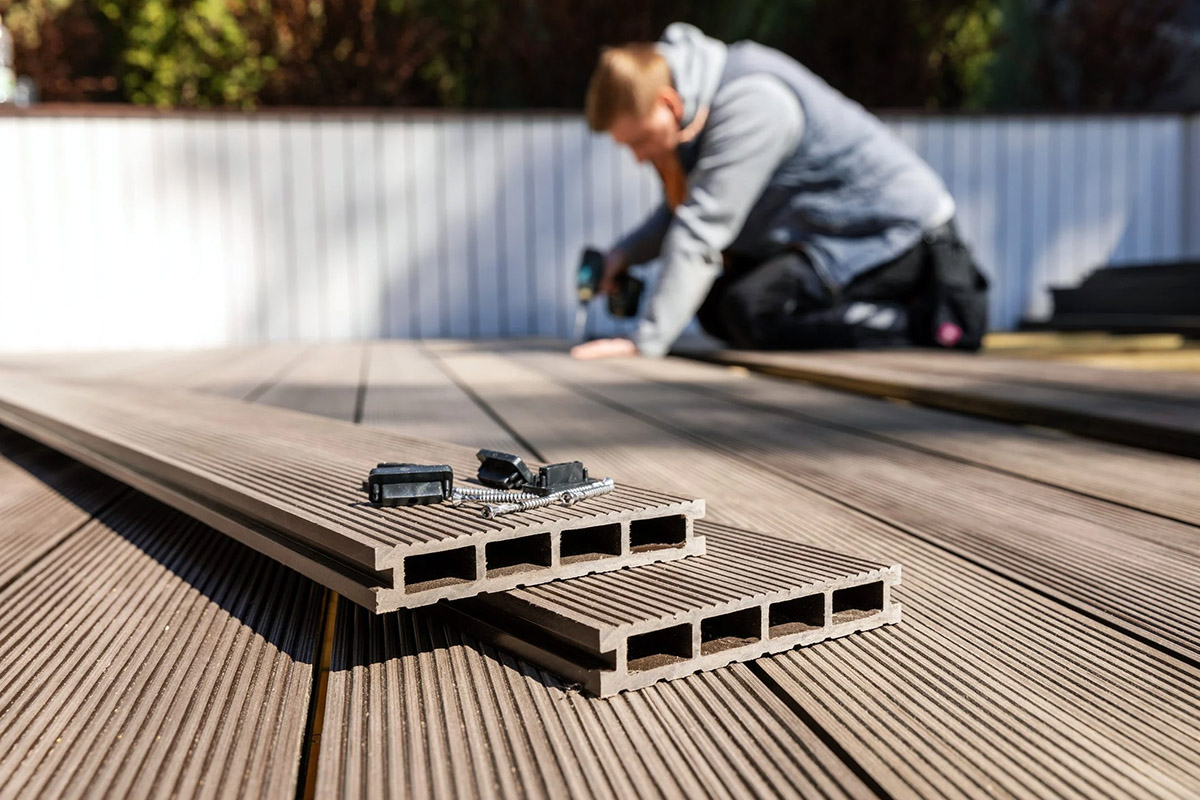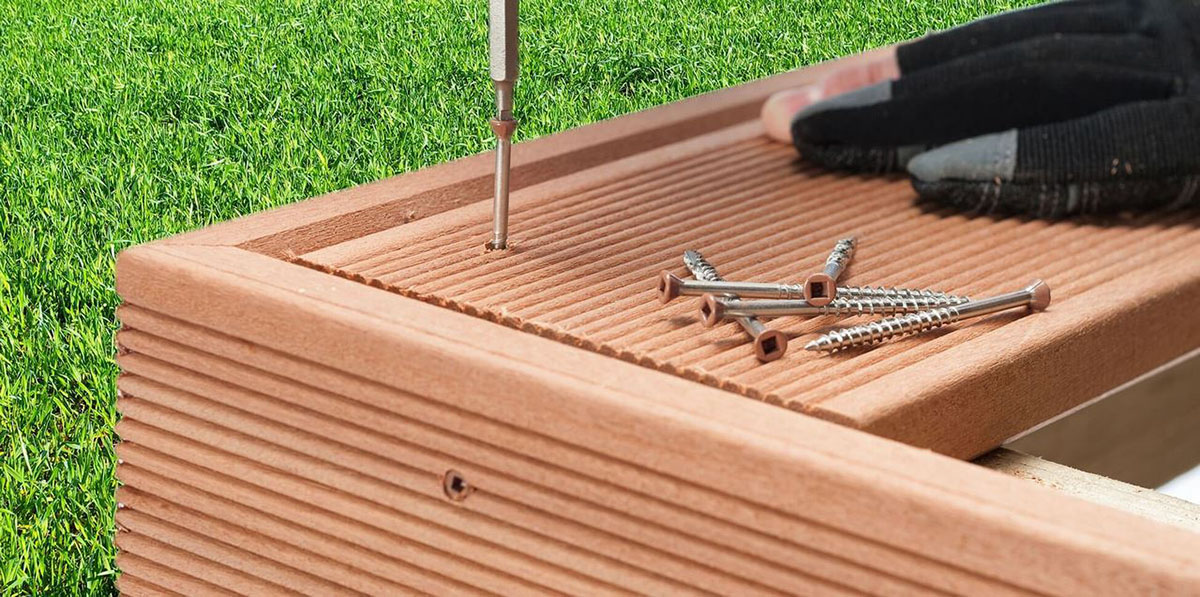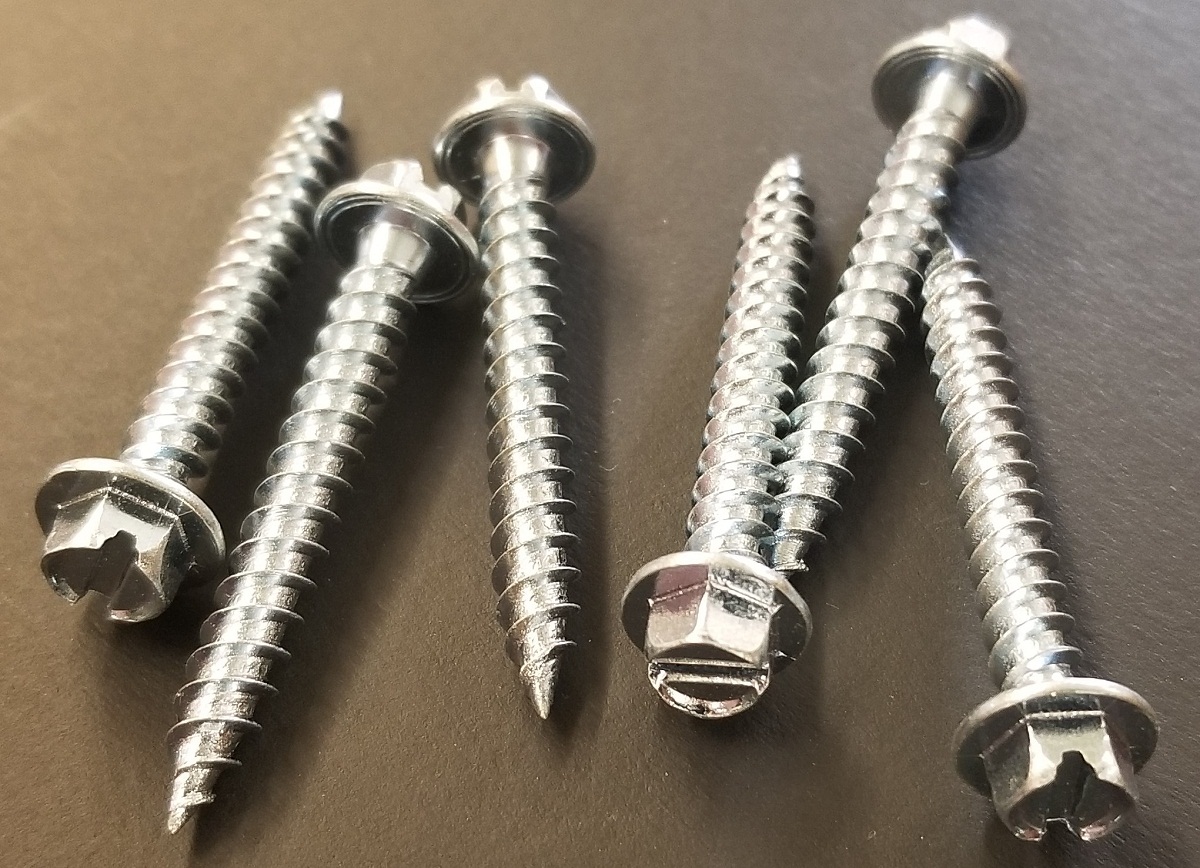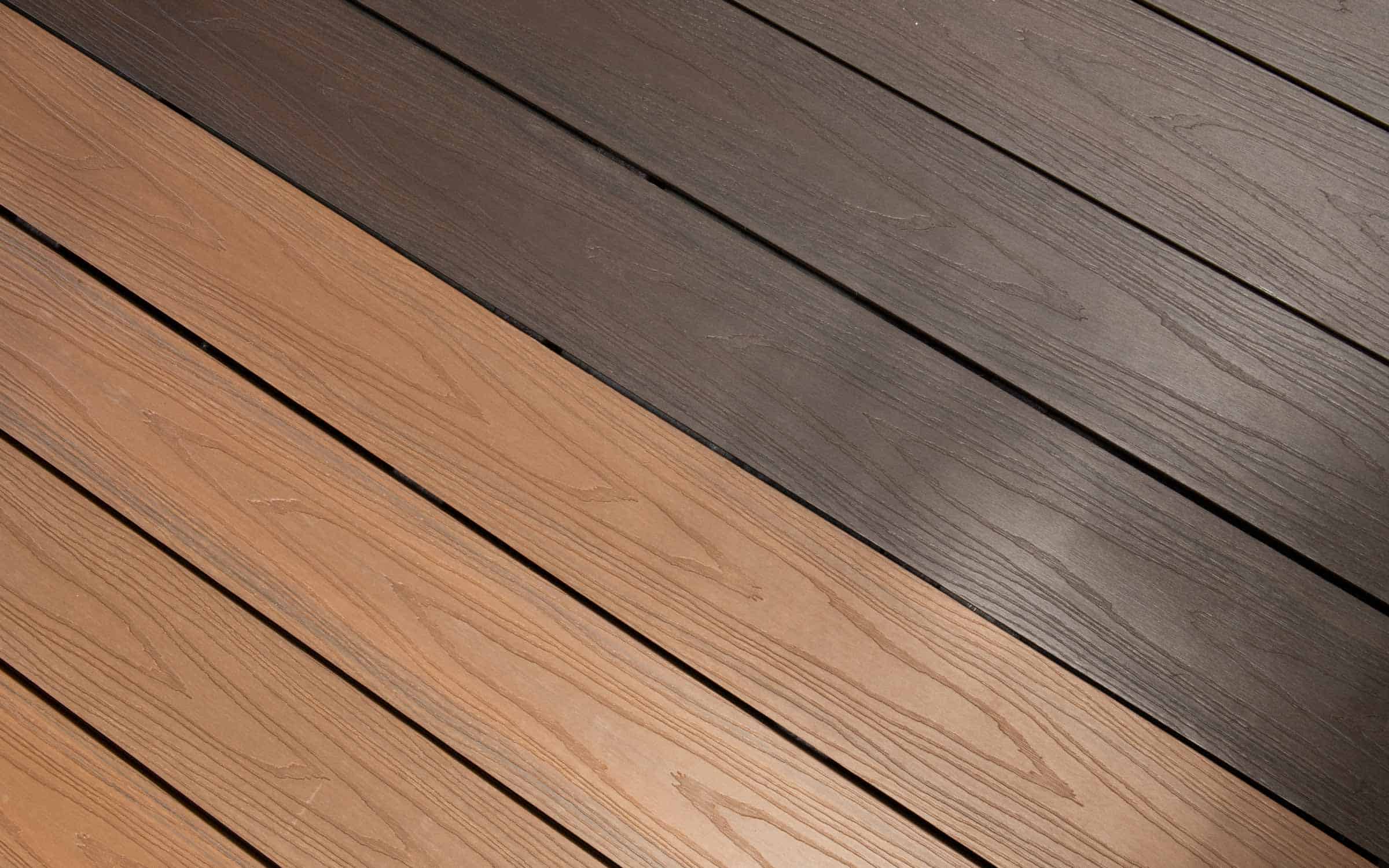Home>Gardening & Outdoor>Outdoor Structures>What Kind Of Screws To Use For Composite Decking


Outdoor Structures
What Kind Of Screws To Use For Composite Decking
Modified: April 23, 2024
Discover the best screws for composite decking and outdoor structures. Learn which types of screws work best for your outdoor projects.
(Many of the links in this article redirect to a specific reviewed product. Your purchase of these products through affiliate links helps to generate commission for Storables.com, at no extra cost. Learn more)
Introduction
Composite decking has gained immense popularity in recent years due to its durability, low maintenance requirements, and aesthetic appeal. When embarking on a composite decking project, it's crucial to select the right screws to ensure a secure and long-lasting installation. The type of screws chosen can significantly impact the structural integrity and overall appearance of the deck. In this article, we will explore the various types of screws suitable for composite decking, factors to consider when making a selection, and best practices for their installation. By understanding these key aspects, both seasoned professionals and DIY enthusiasts can make informed decisions and achieve superior results in their decking endeavors. So, let's delve into the world of composite decking screws and uncover the secrets to a flawless, enduring deck installation.
Key Takeaways:
- Choose the right screws for composite decking to ensure a strong and beautiful deck. Consider material compatibility, weather resistance, and installation best practices for a long-lasting outdoor space.
- Prioritize material compatibility, weather resistance, and appearance when selecting screws for composite decking. Follow best practices such as pre-drilling, strategic placement, and regular maintenance for a professional and enduring installation.
Read more: What Kind Of Screws To Use With Trex Decking
Types of Screws for Composite Decking
When it comes to composite decking, using the right screws is vital for ensuring the structural integrity and visual appeal of the finished project. Here are the primary types of screws commonly used for composite decking:
- Composite Deck Screws: These specialized screws are specifically designed for composite decking materials. They often feature aggressive threads and a corrosion-resistant coating to provide a secure grip and prevent rust or staining on the decking surface.
- Trim Head Screws: Trim head screws are an excellent choice for composite decking installations, especially when a clean, finished look is desired. Their small heads sink neatly into the decking material, creating a seamless and aesthetically pleasing surface.
- Stainless Steel Screws: Stainless steel screws are renowned for their exceptional corrosion resistance, making them an ideal option for outdoor applications like composite decking. They are available in various sizes and styles, including flat head and pan head designs.
- Hidden Fasteners: Hidden fastening systems offer a sleek and unblemished decking surface by concealing the screws beneath the deck boards. These innovative systems often utilize specialized clips and screws to securely fasten the boards while maintaining a seamless appearance.
Each type of screw offers distinct advantages, and the choice ultimately depends on the specific requirements of the decking project, as well as personal preferences for aesthetics and ease of installation.
Factors to Consider When Choosing Screws
When selecting screws for composite decking, several crucial factors should be taken into account to ensure a successful and enduring installation. Consider the following aspects before making your decision:
- Material Compatibility: Ensure that the screws are compatible with the composite decking material to prevent potential issues such as corrosion, staining, or structural instability. Many manufacturers provide specific recommendations for compatible fasteners, which should be carefully followed to maintain the integrity of the decking.
- Weather Resistance: Given that composite decking is often exposed to the elements, it’s essential to choose screws with superior weather resistance. Stainless steel and specially coated screws are popular choices for outdoor applications due to their ability to withstand moisture, UV exposure, and temperature fluctuations.
- Appearance: The visual impact of screws on the decking surface is an important consideration. Depending on the desired aesthetic, you may opt for screws with small, inconspicuous heads or explore hidden fastening systems to achieve a seamless and unblemished look.
- Installation Method: Consider the installation method and tools required for the chosen screws. Some screws are designed for traditional top-down installation, while others are compatible with hidden fastening systems that offer a clean and unobtrusive finish.
- Long-Term Performance: Assess the longevity and durability of the selected screws. Investing in high-quality, corrosion-resistant screws can significantly extend the lifespan of the decking installation and minimize the need for maintenance or replacements in the future.
- Manufacturer Recommendations: Always consult the decking material manufacturer’s guidelines and recommendations for approved fasteners. Adhering to these specifications can help preserve warranties and ensure optimal performance of the composite decking.
By carefully evaluating these factors, you can make an informed decision when choosing the most suitable screws for your composite decking project, ultimately contributing to the longevity, stability, and visual appeal of the finished deck.
When choosing screws for composite decking, use stainless steel or coated screws specifically designed for use with composite materials. These screws are resistant to corrosion and will provide a secure hold for your decking boards.
Best Practices for Installing Screws in Composite Decking
Proper installation of screws in composite decking is essential to achieve a professional finish and ensure the structural integrity of the deck. Follow these best practices to optimize the installation process:
- Pre-Drilling: In some cases, pre-drilling pilot holes may be necessary, especially near the ends of composite boards to prevent splitting. This is particularly important when working with dense or hard decking materials to facilitate the insertion of screws without causing damage.
- Correct Placement: Position the screws strategically to secure the decking boards firmly in place. Ensure consistent spacing between screws to prevent warping or buckling of the boards over time. Additionally, align the screws with the joists or substructure for maximum stability and support.
- Driving Depth: Pay attention to the driving depth of the screws to avoid over-tightening, which can potentially damage the decking material. Follow the manufacturer’s recommendations regarding the appropriate depth for securing the screws without compromising the integrity of the boards.
- Utilize Hidden Fastening Systems: Consider utilizing hidden fastening systems for a sleek and unblemished decking surface. These systems often involve specialized clips and screws that allow for secure fastening while concealing the hardware, resulting in a clean and polished appearance.
- Quality Tools: Use high-quality, appropriate tools for installing screws in composite decking. This includes reliable drill drivers or impact drivers equipped with suitable screwdriver bits to ensure efficient and precise installation while minimizing the risk of damage to the decking material.
- Follow Manufacturer Guidelines: Adhere to the decking manufacturer’s guidelines and recommendations for screw installation. This may include specific instructions for fastener placement, spacing, and techniques tailored to the unique characteristics of the decking material.
- Regular Maintenance: Periodically inspect the installed screws and decking boards for any signs of loosening, corrosion, or damage. Address any issues promptly to uphold the structural integrity and appearance of the composite decking over time.
By implementing these best practices, you can ensure the secure and professional installation of screws in composite decking, leading to a visually appealing, long-lasting, and structurally sound outdoor living space.
Conclusion
Choosing the right screws for your composite decking project is a critical decision that influences both the structural stability and visual appeal of the finished deck. By understanding the various types of screws available, considering essential factors when making a selection, and implementing best practices for installation, you can elevate the quality and longevity of your decking installation.
Whether opting for composite deck screws, trim head screws, stainless steel screws, or hidden fastening systems, it’s crucial to prioritize material compatibility, weather resistance, appearance, and long-term performance. Additionally, adhering to the manufacturer’s recommendations and guidelines for screw installation is paramount in preserving warranties and ensuring optimal performance of the composite decking.
By following best practices such as pre-drilling pilot holes, strategically placing screws, utilizing hidden fastening systems, and employing quality tools, you can achieve a professional and enduring composite decking installation that enhances your outdoor living space for years to come.
Ultimately, the careful selection and installation of screws contribute to the overall success of your composite decking project, providing a secure, visually appealing, and low-maintenance outdoor environment for relaxation, entertainment, and enjoyment.
With the knowledge and insights gained from this article, you are well-equipped to make informed decisions and execute a seamless and durable composite decking installation, ensuring that every screw serves as a testament to the quality and craftsmanship of your outdoor living space.
Frequently Asked Questions about What Kind Of Screws To Use For Composite Decking
Was this page helpful?
At Storables.com, we guarantee accurate and reliable information. Our content, validated by Expert Board Contributors, is crafted following stringent Editorial Policies. We're committed to providing you with well-researched, expert-backed insights for all your informational needs.
















0 thoughts on “What Kind Of Screws To Use For Composite Decking”